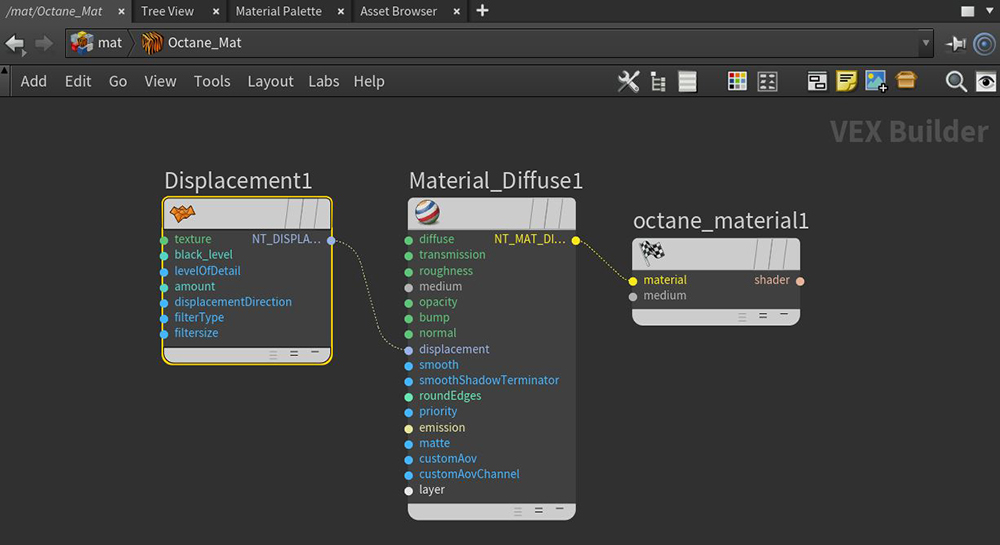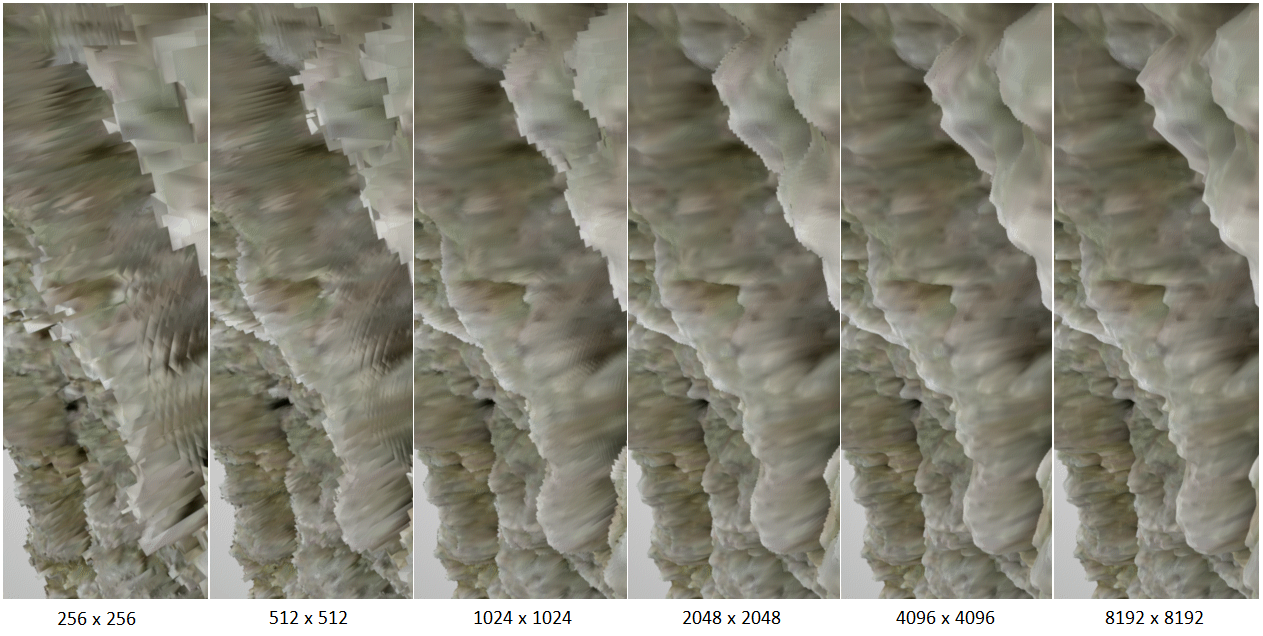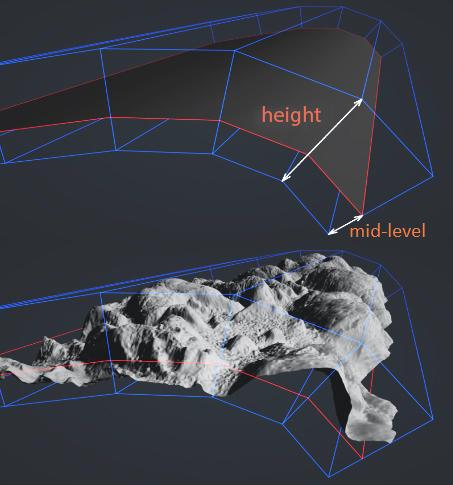
DisplacementThe process of utilizing a 2D texture map to generate 3D surface relief. As opposed to bump and normal mapping, Displacement mapping does not only provide the illusion of depth but it effectively displaces the actual geometric position of points over the textured surface. mapping utilizes a 2D texture map in order to generate 3D surface relief (Figure 1). As opposed to Bump and Normal mapping, Displacement mapping provides the illusion of depth and it displaces the actual geometric position of points over the textured surface.
The standard displacement node in Houdini only accepts imported texture maps and requires objects to have UV coordinates, either with a typical projection type or unwrapped.

Figure 1: Adding a Displacement node to a shading network
Texture Input - Accepts Displacement maps generated in content creation software such as ZBrush®, 3D-Coat, or Substance Designer.
Mid Level - Defines the shift of the displacement in texture value range. If a ZBrush export has Displacement set to 0.5, then set Mid Level to 0.5.
Level Of Detail - Controls the Displacement map resolution (Figure 2).

Figure 2: Levels Of Detail comparisons
Height - Determines the Displacement texture's strength or effect (Figure 3).

Figure 3: Functionality of the Height and Mid-Level parameters
Displacement Direction - Determines the Displacement direction.
Filter Type and Filter Radius - Adjusts the Displacement map's softness. Box or Gaussian will create a slight blur and the Filter Radius will increase or decrease the strength of this blur.
Displacement supports Image textures. Other Procedural textures won't work, but it’s possible to use most Houdini® textures with OctaneRender® Displacement because of the Render To Texture feature of the plugin. Simply convert any Houdini® shader to images, and use those generated images.
OctaneRender® interprets Displacement maps such that black means there is 0 displacement. Calculating Displacement geometry places an additional load to the GPUThe GPU is responsible for displaying graphical elements on a computer display. The GPU plays a key role in the Octane rendering process as the CUDA cores are utilized during the rendering process., and very high or low Displacement values (Height) can cause issues and GPU errors. Displacement mapping emphasizes details inherent in the textural aspects of the scene rather than major features that should otherwise be provided by the geometry (rugged terrains, large crevices).
Displacement can't work with a Normal map on the same MaterialThe representation of the surface or volume properties of an object., as this would result in rendering artifacts on that Material.
However, you can use a Mix material with any other Material that utilizes Bump and Normal maps by placing the Displacement map in the Displacement slot of the Mix materialUsed to mix any two material types..